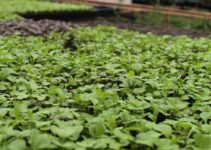One of the interesting topics of environmental economics is economic valuation. What is economic valuation and how does it work? What is change in income technique? This article explains these concepts.
The Meaning of Economic Valuation
Economic valuation entails imputing monetary value to natural and environmental resources that were once regarded free. This is because everyone thought that natural and environmental resources are inexhaustible.
Background on the Rise of Environmental Economics
It was not until around the 1960s, during the height of the industrial revolution, when people realized that natural resources like clean air has value attached to it. Although air may be inexhaustible, its quality can be compromised. Polluted air is associated with various diseases of the respiratory system thus entail cost.
Air is consumed by everyone, and anything that is being consumed is a good. A good can be represented by money. But the amount of money that corresponds to, say, a liter of fresh air, is not easily determined. Unlike other goods found in the market, air is neither sold nor bought. But we know for sure that clean air is a valuable resource that, just like any resource that we consume, provides benefit to everyone. Clean air is one important good that man could not do without.
The air people consume (by inhaling it in their lungs and deriving oxygen to burn food hence release energy), just like any good, exists at various levels of quality. Air of good quality provides greater benefit to people than air of poor quality. Air of poor quality or polluted air can cause different kinds of illnesses. Thus, a good of excellent quality provides greater benefit to consumers than a good that is of inferior quality.
Why is it necessary to assign monetary value to clean air? The main purpose of assigning value is to be able to manage this important natural resource. Unless monetary value is given to it, people tend to undermine its importance as anyone could get it free. At best, the value of a consumed good like clean air can only be estimated. This can be done through indirect means.
In environmental economics, one of the tools used in valuing natural resources such as air is the change in income technique. How is this economic valuation tool used?
Change in income technique is discussed in greater detail below using air as an example to demonstrate how this valuation technique works.
Change in Income Technique

In today’s civilized cities, it is expected that some degree of air pollution exists. The value of the ambient air, therefore, lies within a range of air quality, i. e., clean air to highly polluted air. Correspondingly, clean air will be valued more by people than polluted air; but how much will that be?
Since the value of clean air could not be directly measured, this can be valued indirectly by looking into the change in people’s income due to loss of work from ill health, premature illness or death resulting from polluted air. If the quality of air is improved, there will be improvement in health, illnesses are reduced or avoided, and premature death is prevented.
Therefore, the value of air improvement is equal to the difference in income between people living in a polluted air environment and in another location or state of better air quality. It is assumed that more income will be gained by people due to better health achieved in a locality with cleaner air. Cleaner air environment is associated with healthier people who are able to do more work, thus more income gained.
Use of the Valuation Technique: Comparing Costs and Benefits
How can the quality of air be improved so that people will gain more income?
This can be done by formulating and implementing pollution control regulations to limit, reduce or eliminate the source of pollution. But the implementation of pollution control regulations entail cost in terms of the personnel required to implement it, equipment to monitor emissions, advocacy through information and education campaign, among others.
If income increases after implementation of pollution control regulations, then it is now possible to compare the cost and the gains. A cost-benefit analysis can then be made. If benefit (B) in terms of increased income far outweigh the cost (C) of implementing pollution control regulations, then the cost of implementing pollution control regulations is justified.
These scenarios may be represented by the generalized equations of cost and benefit below.
1) B – C = 0 POLLUTION CONTROL REGULATION HAS NO EFFECT AT ALL
2) B – C > 0 POLLUTION CONTROL REGULATION IS EFFECTIVE
3) B – C < 0 POLLUTION CONTROL REGULATION IS NOT WORTH IT
It will be desirable to attain condition 2 but the outcome may depend on a given time frame of assessment. It is possible that either condition 1 and 3 may be that outcome during the early stage of implementation of pollution control regulation.
Change in income therefore is a useful economic valuation tool that can be used to measure the relative value of air quality. Its application is straightforward, although a strong link must be established between air quality and health and vice-versa.
© 2013 January 31 P. A. Regoniel



